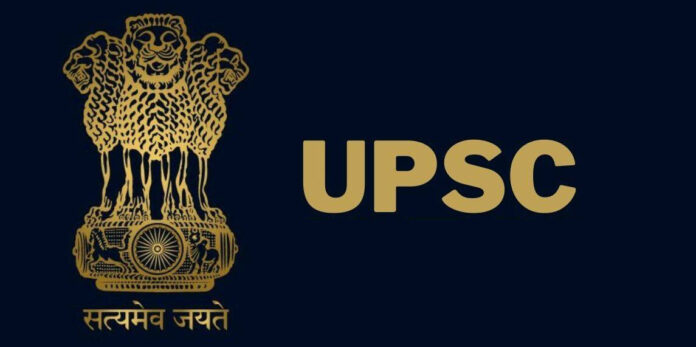CSAT stands for Civil Services Aptitude Test. It is a component of the UPSC Prelims (CSE – Preliminary). Although, the Union Public Service Commission (UPSC) calls the exam as General Studies (GS) Paper – II. Therefore, when talking about the UPSC Prelims, GS Paper II translates to the CSAT while talking about the UPSC Mains, GS Paper II is for the subject of Polity (etc.). Candidates are suggested to go through the complete UPSC CSE Syllabus and the CSAT syllabus in UPSC Prelims to avoid any confusion.
What is the IAS Syllabus?
The IAS Prelims/UPSC Prelims exam is the first stage of the Union Public Service Commission Civil Services Examination (CSE). The UPSC CSE comprises three stages:
- Preliminary Exam – 2 objective type papers
- UPSC Mains – 9 theory papers
- IAS Interview
The two papers in the UPSC Prelims are:
- General Studies Paper – I
- General Studies Paper-II or CSAT
The formal release of the IAS Notification and UPSC CSAT Syllabus coincides. It debuted in 2011 as a component of the UPSC examination. Two papers, one for General Studies Paper 1 and the other for CSAT, are part of the IAS Prelims test. (2 GS Paper) Civil Services Aptitude Test is known as CSAT. The purpose of the UPSC CSAT Syllabus is to evaluate candidates’ aptitude and analytical capabilities. In the UPSC Prelims, questions from the CSAT Syllabus are for a total of 200 points. Candidates must receive a score of at least 33% on UPSC CSAT Paper 2 in order to advance to this paper.
The candidates must have a thorough comprehension of the UPSC IAS Syllabus in order to be selected for this paper by earning high marks, despite the fact that it is qualifying in nature. The CSAT (Civil Services Aptitude Test) syllabus for UPSC 2022 shall comprise the following broad categories:
- Comprehension
- Interpersonal skills including communication skills
- Logical reasoning and analytical ability
- Decision-making and problem-solving
- General mental ability
- Basic numeracy (orders of magnitude, numbers and their relations, etc.) (Class X level), Data interpretation (charts, tables, graphs, data sufficiency, etc. – Class X level)
GS Paper 1 and CSAT Paper 2 are included in the UPSC Prelims Syllabus. A prelims curriculum, UPSC Mains, and an optional syllabus are all included in the full UPSC Syllabus. Candidates should review the UPSC Mains Syllabus and make preparation plans based on it.
UPSC CSAT Maths Syllabus
IAS hopefuls struggle to understand the UPSC CSAT Maths Syllabus, and this issue has long plagued aspirants. However, we have compiled a list of crucial subjects by studying UPSC Question Papers in order to simplify things for applicants. If you study the topics listed below, you will be able to cover the majority of the UPSC CSAT Syllabus.
| CSAT Maths Syllabus | Topics |
| Basic Numeracy | L.C.M & H.C.F, Number System, Rational Numbers & Ordering, Simplification, Decimal Fractions, Square Roots & Cube Roots, Ratio & proportion, Surds & Indices, Percentages, Set theory, Averages, Remainder Theorem, Divisibility Rules. |
| General Mental Ability | Partnership, Time and Distance, Profit & Loss, Trains, Time & work, Boats & Streams, Work & Wages, Pipes & Cisterns, Allegation & Mixtures, Simple Interest & Compound Interest, Mensuration & Area, Probability, Permutations & Combinations, Geometry |
CSAT Reasoning Syllabus
CSAT Reasoning Syllabus is not separately defined by UPSC. However, we can separate the UPSC CSAT Syllabus for reasoning into two portions based on the questions from last year. Look at the list of subjects that will be discussed below.
| CSAT Reasoning Syllabus | Topics |
| Logical Reasoning And Analytical Ability (LR & AA) | Classification, Analogy, Series, Blood Relation, Coding-Decoding, Direction Sense Test, Alphabet Test, Seating Arrangement, Logical Venn Diagram, Mathematical Operations |
| Data Interpretation & Data Sufficiency (DI & DS) | Table Chart, Bar Chart, Pie Chart, Arithmetical Reasoning, Eligibility Test, Inserting the missing character, Number, Clock, Calendar, Ranking and Time Sequence Test, Problems on Ages, Cubes & Dice, Statement & Arguments, Syllogism, Statement & Assumptions, Statement & Course of Action, Statement & Conclusions, Deriving Conclusion, Assertion & Reason, Punch Lines, Situation Reaction Test, Cause & Effect, Analytical Reasoning, Mathematical puzzles & patterns |
Why is is CSAT Important?
The final verdict of merit (IAS prelims ranking) of the candidate to pass for the UPSC mains examination was determined by taking into account the total marks from both Paper-1 (General Studies Paper) and Paper-2 (CSAT Paper) of the UPSC Prelims. A part of the applicant community objected to the CSAT being included in the ranking order, and the UPSC made a little alteration to the pattern in response. The CSAT was added as a qualifying exam in 2015.
To pass the Civil Services Preliminary Examination under the current UPSC examination scheme, candidates must receive a minimum of 33%, or 66 out of the 200 marks, on the CSAT test. Only those applicants who pass the UPSC-required cutoff marks in GS Paper-1 and achieve a score of 66 or more in GS Paper-2 are permitted to sit for the civil services mains test.

